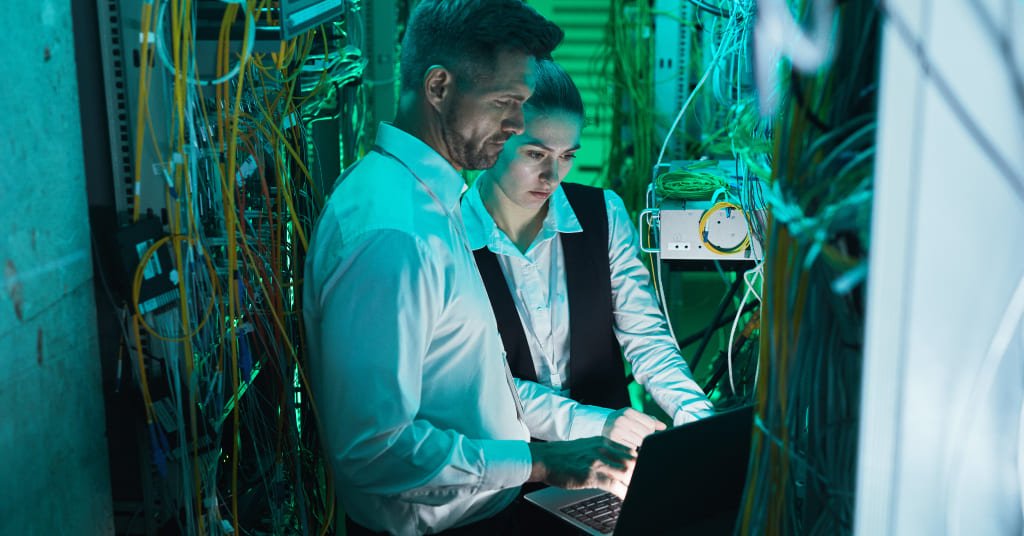To run data centers efficiently, owners must make informed decisions. Almost 20-40% of the operating costs for a data center are associated with the power needed to run the facility. Components like IT equipment, redundancy elements, cooling equipment, lighting, etc., demand quality and a reliable power supply to ensure maximum uptime.
Data Center power design must be built with careful consideration to ensure that the power consumption is optimized and utilized efficiently to maintain sustainable operational costs. If data center power design is not based on the best practices, the facility can lead to losses and ultimately be inefficient over time.
Data Center Power Mistakes

To stay relevant and reliable in this competitive market, steering clear of the common mistakes in data center power designs can help keep the data center facility afloat.
1. Incorrect Data Center Power Estimations
Despite technological advancements and efficient computing devices, it was found that in the US, the energy cost to power a single server rack can be up to USD 30,000 a year. If a data center has 100 racks, the price to power these racks can go up to USD 3 million a year. If power consumption is not estimated accurately, it can exceed forecasted power costs, leading to severe losses.
The server nameplates have information about the power rating and consumption. Including the redundancy component into the calculations, the power requirements for the servers can be estimated. Sometimes, even during peak workloads, the power consumption for the server CPU can only be at a 50% load. This indicates that simply calculating the power consumed by components can lead to the underutilization of the power source.
Instead, understanding the units in and out and estimating the optimal power requirements needed to run the units can help establish the correct power supply for the data center without overutilization or underutilization.
2. Not adapting Automatic Transfer Mechanism
As part of the redundancy systems, the power from the primary power source is switched to the backup generators using a transfer switch. For a successful transition, most data centers manually disconnect the neutral terminal using a four-pole circuit or a power contractor. This prevents the system from incurring any issues.
Most UPS systems currently require an input-neutral connection that does not require a transformer. If the generator is powered and the UPS does not find a neutral terminal for reference, a floating neutral is formed, and a floating load is built. This can cause the server to trip or freeze.
The automatic transfer mechanism is designed to safeguard the system against any such tripping or system failures by overlapping the neutral mechanism.
3. Incorrect Data Center Power Equipment Choices
A data center compiles many components together that function in unison. These individual components must be chosen considering each configuration and its compatibilities. If one component in the system is chosen incorrectly, it can cause over or underutilization of the power load, critically damaging the systems.
For instance, a UPS with a power rating of 500 kV can deliver 300 kW with the leading power factor of 0.8. This will provide 400 kW with a lagging power factor of 0.8. If the values are mismatched, it can trigger an overload in the system and cause it to trip.
4. Poor Cabling for Server and UPS
Datacenter experts consider several values and factors before designing power cables for servers and UPS. The size and capabilities of the power cables connecting the servers and the power distribution units must be considered before deciding on the cable choices. Inaccurate cabling can lead to excessive heating, voltage dropping, and ultimately cause an overload in the power system.
To avoid these problems, the values and configurations of the power cables and the components they are connecting to are considered without any distortions or inaccuracies. It is recommended to have a 100 sqm cable working at a regular performance and an extra 130 sqm cable as an alternative to keep the first cable from failing and prevent the system from shutting down due to accidents or mishaps.
5. Excessive Loads in Single Points
This is one of the most significant mistakes made in data center power designs where a single point is given an excessive load, leading to overall system failure. Overloads or malfunction can occur if many components or heavy-duty data center equipment is connected to a single point in the power line. In case of a PDU breakdown or failure, all systems connected to the PDU can fail or immediately shut down.
Efficient data center power designs employ two PDU systems connected to the data center servers in a dual bus architecture to solve such problems. This system works under the principle that if one PDU fails, the other PDU takes up the load and enables the connected systems to function seamlessly. This can help prevent systems from shutting down due to excessive power loads at a single point.
Summing Up
Best data center power design practices can help businesses save millions a year and build efficient systems that do not fail quickly. Making sure that data center power estimations are calculated correctly can help you incorporate the right equipment and spend wisely on power requirements. Automatic Transfer Mechanisms can ensure that systems do not fail or trip during the transition from utility generators to backup generators.
Additionally, data center power equipment if chosen correctly can ensure that all systems function optimally with full efficiency. Proper cabling for servers and UPS systems can prevent heating or unwanted system failures. Using a dual bus architecture for PDUs can prevent damages to the line due to excessive loads at a single point.
It is advised to make use of data center experts and engineers to help with data center power design to ensure that the systems function efficiently even under stressful conditions.


 Share
Share  facebook
facebook